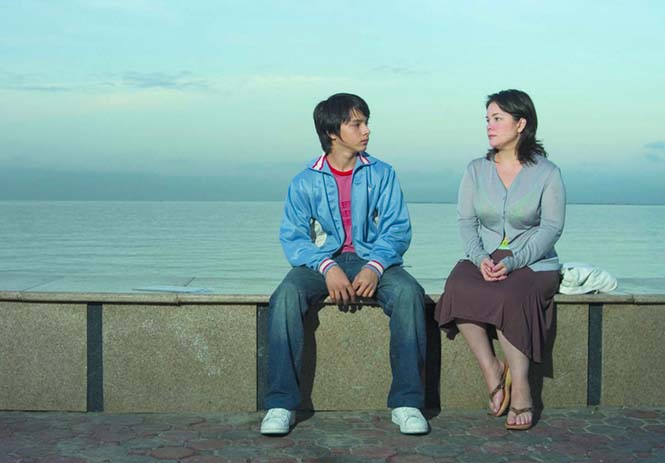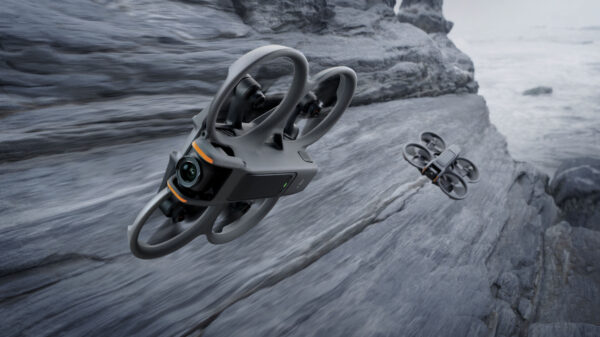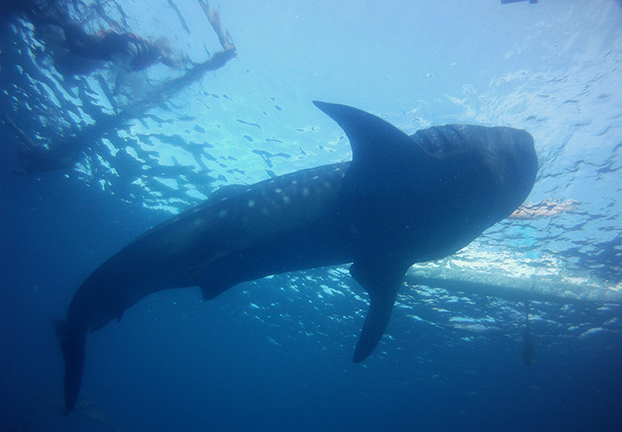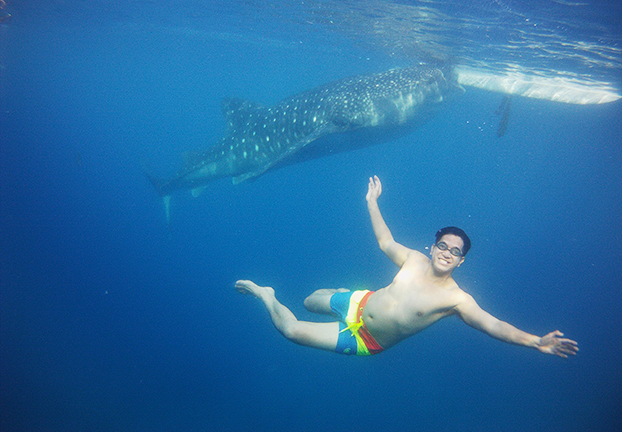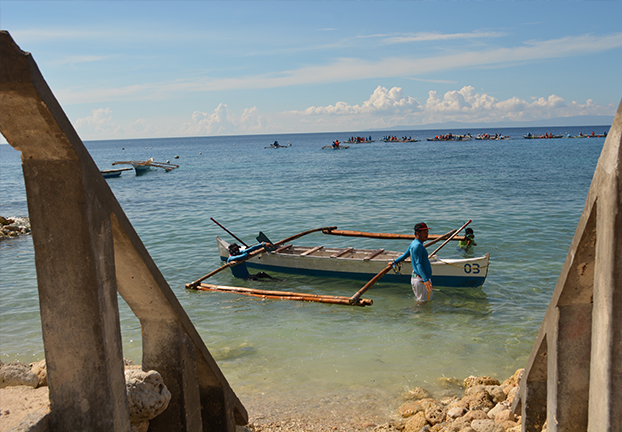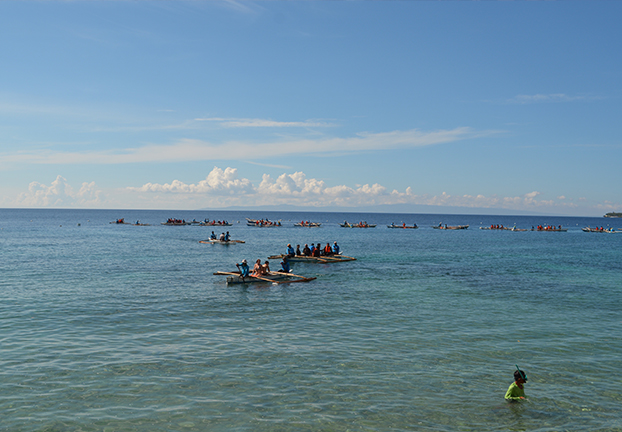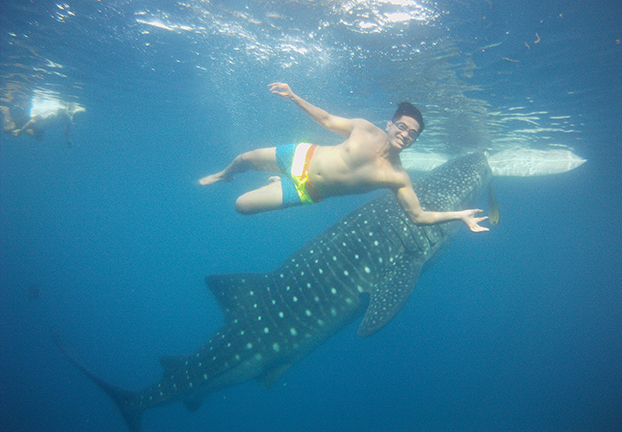There are two sites in the Philippines that are popularly known to provide people (i.e. tourists) the chance to “interact” with the famed gentle giants of the seas, the whale sharks (i.e. “butanding”) – Donsol, Sorsogon and Oslob, Cebu. And based on personal experience in visits to both sites, there are pros and cons worth considering. These pros and cons, not incidentally, are largely driven by profiteering from a natural wonder…
In Donsol – as we’ve written in the past – profiteering can be seen in treachery (for the lack of a better word). That is, the butanding only visit the small fishing village a few months in a year; but even off-peak, the locals (who have become the tourist guides) will still claim that they can “look” for the giants of the sea with you. This means paying them X amount of money (for the “professional” fees, rent of the bangka, rent of equipment, et cetera) as you basically waste your time looking for what’s not there. If you’re really, really eager to look for the butanding, they ask for more money so you can search again the next days – again, even if they already know that the butanding has long gone.
In Oslob, profiteering can be seen in the “conversion” of the butanding. This place can be likened to an aquarium (or even a “natural” zoo); and the butanding, mere “pets” on leash. Yes, you will see the butanding here for sure, since they hardly ever leave the place. The locals have “tamed” them by incessantly feeding them; this “easy” life sort of forced them to just stay here.
It is, therefore, hard to support – or even promote – this form of eco-tourism.
This is, I suppose, the “tricky” part.
We recognize various facets of the promotion of Oslob as an eco-destination to interact with the butanding.
There’s the providing of employment to the locals (who would otherwise kill the fish for their meat, a source of livelihood for many in the past). Nowadays, it is not uncommon to hear these fishermen-turned-tourist guides as staunch caretakers of the seas’ bounties (butanding included); and hearing them claim that protecting the seas IS a way of protecting the fishermen and their families is (admittedly) heartening…
There’s the issue of the “taming” of the butanding, with animal rights activists right in claiming that this approach is basically ruining natural order. The butanding are wild animals; and with this “arrangement”, they are now turned into “pets” that seem to solely exist for the benefit of those who want to earn from them (and yes, those who pay to see them).
Alas, no, Oslob shows how we have yet to find a “common ground” (if it can be called that). That is, we have yet to really find comprehensive solutions to the issues besetting the fishermen and their families (helmed by their lack of consistent sources of earnings) so that they continue “taming” the butanding (in the guise of giving people the chance to learn more about the need to protect these giants).
A discussion is, indeed, needed for the “solutions” regarding this to be comprehensive.
In the meantime, for those in Cebu City who are keen to encounter the butanding, here are some must-know points:
- To go to Oslob, head to South Terminal in Cebu City. There, there are buses heading to Oslob (even as early as 1:00AM), taking from three to four hours (depending on the traffic conditions). Airconditioned bus fare is P165. Note that the “feeding” of the butanding (more on that in a bit) only happens from 6:00AM to 12:30PM, so the earlier you go there, the better it will be for you. We left Cebu City at 2:30AM, and when we arrived in Oslob just after 6:00AM, there were already lots of tourists.
- Tell the konduktor (in the Philippines, the person who gives the tickets and collects the fare) that you are getting off at BCD’s Resort, which is right beside the registration area for the butanding
- When you get off the bus, there is a registration area (the two resorts there can also help here). You go inside and then pay the fees – i.e. P500 for locals (Filipinos) who want to swim with the butanding/P300 for those who will only watch from the bangka and P1,000 for foreigners who want to swim with the whale sharks (the fee includes the bangka ride, flippers and the goggles). You can pay an additional P550 for the bangkero to take your pics while you swim with the whale sharks (the files can be saved into your Android phone, and saved in a CD).
- You will then be taken to the take-off area, where some educating happens (e.g. that every swim lasts only for 30 minutes, that you to keep your distance from the butanding, not to use chemical-laden sunblock, no splashing in the waters, not to panic when the shark seems to head your way, and so on). As a side note, you can get scratchies while in the waters; so if you’re allergic to bites of se creatures, bring anti-histamine with you…
- You will then be given your vests, hauled into a bangka, and then the bangkero-cum-photographer paddles only a few meters from the shore. Here, all the bangka loaded with tourists line up. Another bangka passes by all the tourists, with this one’s bangkero incessantly feeding a butanding. It is when this butanding passes by your own bangka that the “interaction” happens, making it – basically – a displaying of an animal on a leash (the “leash” here the food it is given).
- After 30 minutes, you are told that the interaction is done, told to return to your bangka, and then head back to the shore. THE. SWIM. WITH. THE. BUTANDING. IS. DONE.
Swimming with sea creatures like the butanding can be… magical. It can give you various insights – e.g. how “small” we all are, even inconsequential in the scheme of things; how beautiful nature can be, perhaps especially if left untouched; and how we continue to be in dire need of education re nature and how we can use it without necessarily destroying it.
And I suppose these insights need to be constantly communicated to us (hammered, even, into our consciousness) everytime we deal with nature; in this case, while bringing out the ‘sirena’ in us. Because if not, then our supposedly “win-win” approach to eco-tourism is in dire need of being reconsidered…

























